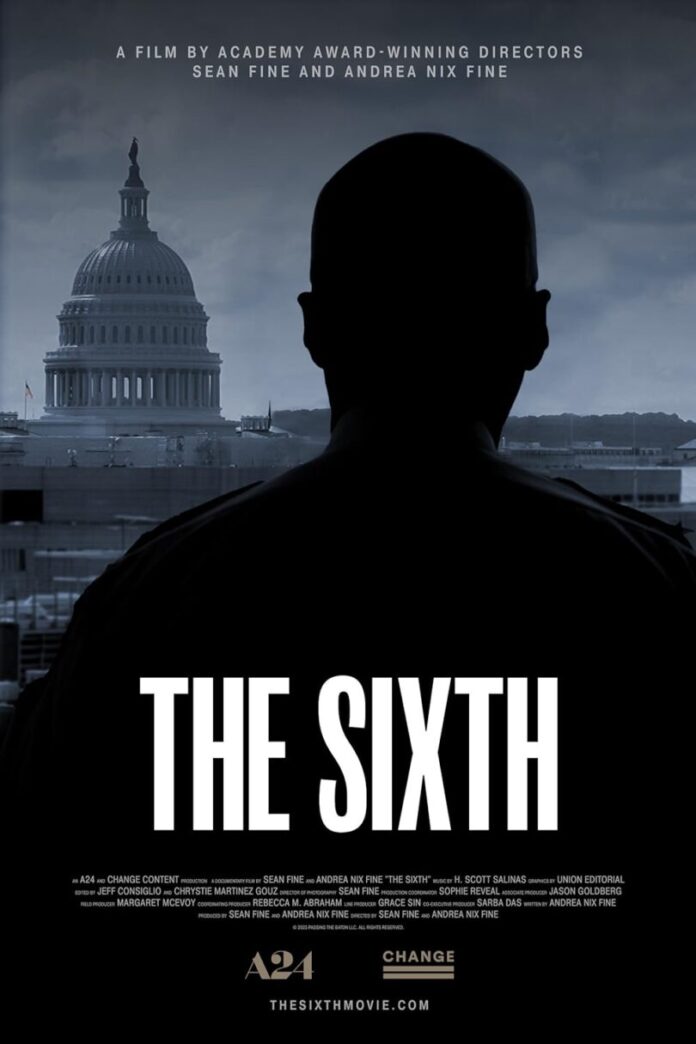
By Stacy M. Brown
NNPA Newswire Senior National Correspondent
In a moving gathering of survivors and spectators, a select group of invitees congregated at the Alamo Drafthouse Cinema in Northeast D.C. on Monday, June 3. The occasion? The unveiling of a long-awaited documentary that sheds new light on the deadly events of January 6, 2021, a day etched in the annals of American history.
The deft hands of Oscar-winning filmmakers Sean Fine and Andrea Nix Fine drew viewers into a heart-wrenching gut-punch of a narrative as the curtains pulled back and the screen came to life. The documentary, titled “The Sixth,” not only captured the horror and chaos of that fateful day but also delved deep into the lives of those thrust into the heart of the storm, evoking a profound emotional response from the audience.
“It’s never been a mystery as to what happened… but tonight, we bring forth a narrative that transcends mere recounting,” remarked Andrea Fine, one half of the acclaimed filmmaking duo. “The Sixth” doesn’t just document the events—it humanizes them.”
The film eschewed the typical focus on the perpetrators and even the insurrection’s primary instigator, former President Donald Trump, opting instead to shine a spotlight on the untold stories of resilience and courage. Through the eyes of six individuals—a diverse ensemble that included a Black photographer named Mel D. Cole, Erica Loewe, a Democratic staffer who serves as the only caregiver to her mother who lives with Alzheimer’s, Congressman Jamie Raskin, and three Metropolitan DC police officers—the audience gained unprecedented insight into the human drama that unfolded amidst the chaos.
Torn with emotion and right in the middle, capturing all the chaos, was Cole, thinking about a world where his toddler son might have to grow up without him because Cole doesn’t know if he’ll survive the Trump-inspired riot.
Raskin, there to help certify President Joe Biden’s election victory over Trump, is drenched with emotion, having buried his 25-year-old son a day earlier. Raskin’s son had suffered from mental health challenges and committed suicide. Making the heart pound ever more, Raskin also had to worry about his daughters, who were inside the Capitol as the attack unfolded.
Loewe, believing death was imminent and worried about who would care for her mother, was among Congressman James Clyburn’s staffers who were barricaded inside an office where rioters were just feet away.
“Every single one of our characters is serving the public in different ways,” emphasized Andrea Fine. “And so, we love that idea of, what if you’re just coming to do your job, and you’re saddled with that, and how they came through.”
As the documentary unfolded, viewers were transported back to the Capitol grounds, where the echoes of violence still reverberated. From Raskin’s anguish, Cole’s uneasiness, and Loewe’s uncertainty to Officer Christina Laury’s harrowing experiences and the gripping personal history of then-D.C. police chief Robert Contee, “The Sixth” left no stone unturned in its quest for truth.
The fear of rioters yelling at law enforcement, and Contee demanding more help and responding incredulously as U.S. Department of Defense officials held back sending the National Guard because they were concerned about “optics.” All the while, the rioters blast through lines of undermanned officers beating them, including policeman Daniel Hodges, mercilessly.
“Politics was inherent in the violence,” remarked Andrea Fine. “What we were trying to do is [determine] like, okay, what happened that day? Truthfully. Really. And how did it feel to go through it? How did it affect the people who just showed up to work?”
While the National Guard stood just minutes away but refusing to assist, D.C. Metropolitan Police struggled mightily to fight off the mob, with some of the rioters yelling, “Get his gun,” as they grabbed and viciously assaulted one officer.
With ladders, poles, and others flying from the crowd (Cole says he couldn’t understand how and where the rioters got their hands on such objects), officers desperately tried to defend the Capitol with pepper spray. They appeared to be the only ones who suffered harm from the aerosol.
Infuriatingly so, after DC and Capitol Police finally received assistance from state police officers in Maryland, Virginia, and New Jersey, Trump finally and tepidly asked his supporters to go home as the deadly event finally reaches its conclusion and at, too little, too late, the National Guard arrives
As the credits rolled and the lights came up, the audience grappled with the weight of what they had witnessed. In the words of Mel D. Cole, “For anyone from D.C., this film hits different… It’s just a different day for all of us here.”


